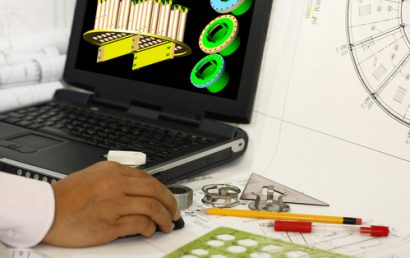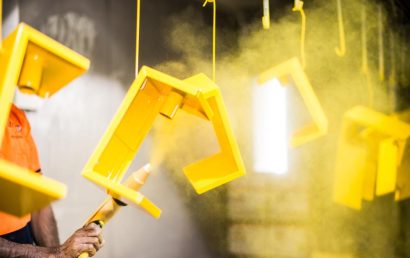An Introduction To Ion Implantation
Today, there are many types of coatings used to improve, in one way or another, the surface of parts, components, machinery, etc. Across numerous industrial sectors, surfaces in various applications benefit from heightened properties as a result of coating processes. In many cases, chemical or physical modification of a surface results from the application of a specific coating. Such is the case with modern ion implantation spray coatings.
In order to introduce you to ion implantation, we must start at the beginning. What is ion implantation? As just discussed, it is a technology that results in surface modification. Impacting into a solid surface, accelerated ions are used. The process is classified as low temperature and changes the electrical, chemical, or physical properties of its target. It is used in materials science research, metal finishing, semiconductor device fabrication, and more. If the ions stop and remain in the target, and if they differ from the target in composition, the target’s elemental composition is altered by the ions.
Let’s take a look at some of the uses of ion implantation.
Metal Finishing
Into a drill bit or other tool steel target, ions such as nitrogen can be implanted. The material, thereby, becomes more resistant to fracture and the process also helps prevent crack propagation. Corrosion resistance is also increased through the chemical change that occurs.
Decreased wear due to friction and resistance to chemical corrosion are the desired effects realized when ion implantation is used in surface finishing. Prosthetic devices are a good example of this application. You can imagine how essential reliable performance is in such cases.
Semiconductor Device Fabrication
Examples of ion implantation in the area of the fabrication of semiconductor devices:
- To prepare silicon on SOI (insulator substrates), one prominent method is separation by implantation of oxygen (the SIMOX process).
- A common application of ion implantation is semi-conductor doping with arsenic, phosphorus, or boron.
- Under the surface of a host crystal, the growth of a crystallographically matching phase is referred to as mesotaxy.
Additional Applications of Ion Implantation Spray Coatings
Examples of other applications in which ion implantation is used:
- Nanoparticle formation that is ion implantation induced
- Ion beam mixing
Problems That Can Arise
Though ion implantation is a necessary part of numerous industries, it is not without its problems. The following are some of ion implantation’s possible drawbacks:
- Amorphization of a target’s surface
- Damage recovery or thermal annealing
- Crystallographic damage
- Ion channeling
- Sputtering
A&A Coatings for Ion Implantation and More
Here’s the thing about ion implantation – it can be dangerous. Posing a risk of electrical injury are the high voltages used in the process, as well as hazards from particle accelerators. Additionally, hazardous materials are frequently encountered in the process of ion implantation.
It must be executed by highly trained professionals experienced in the field. That’s exactly the kind of person A&A Coatings employs and uses for all our coating processes.
Whether it’s ion implantation or another kind of coating process involving other materials, rest assured, we’ve not only done it but mastered it. Our research and development department is constantly testing out new methods, materials, technologies, and improvements each and every day.
When it comes to thermal spray, protective coatings, ion implantation, and more, we’re the company to turn to… and have been for over 70 years. Contact us today for more information.



